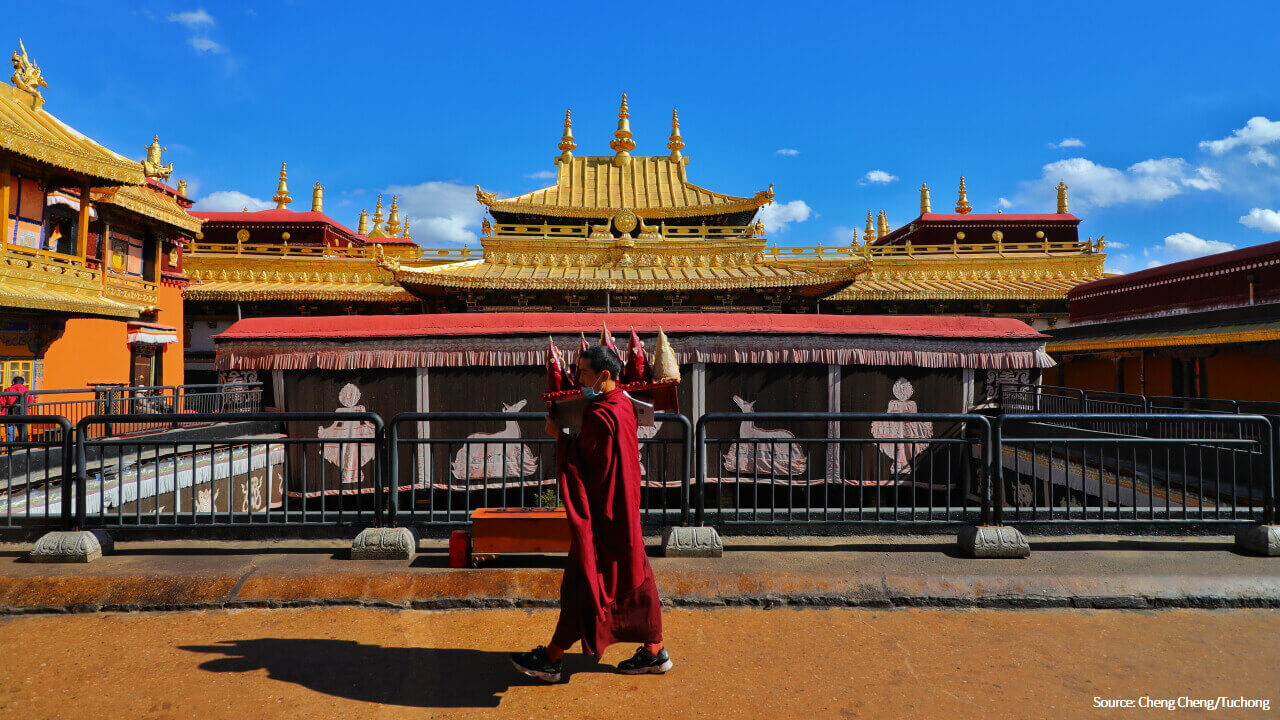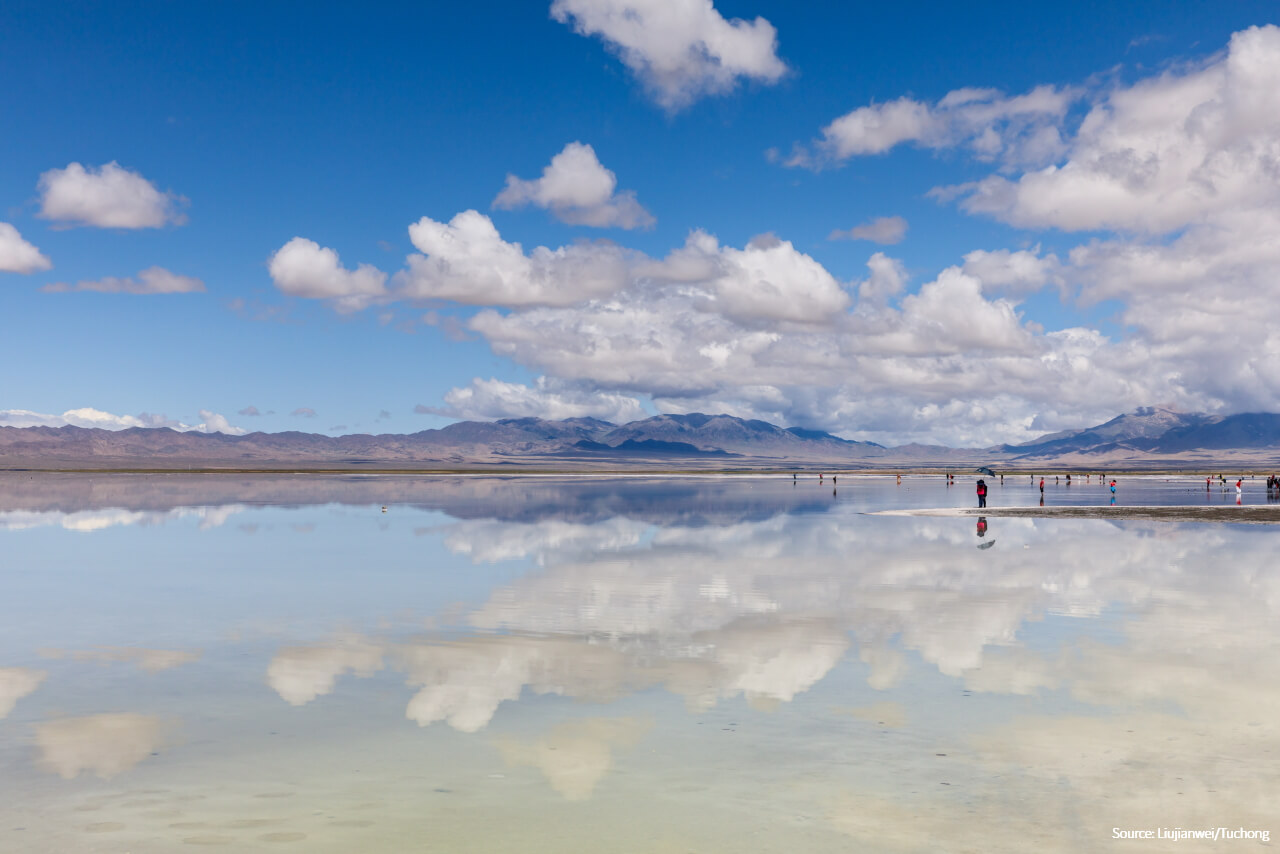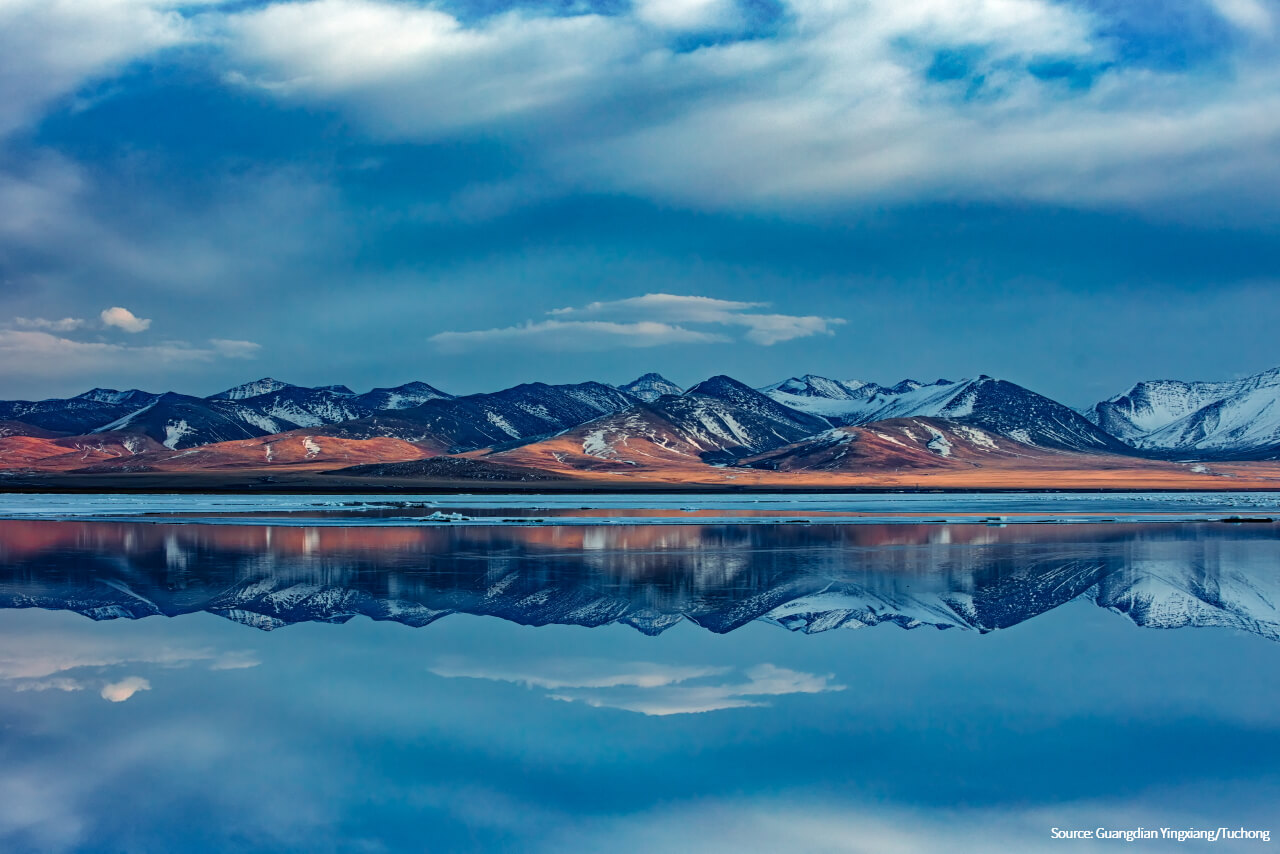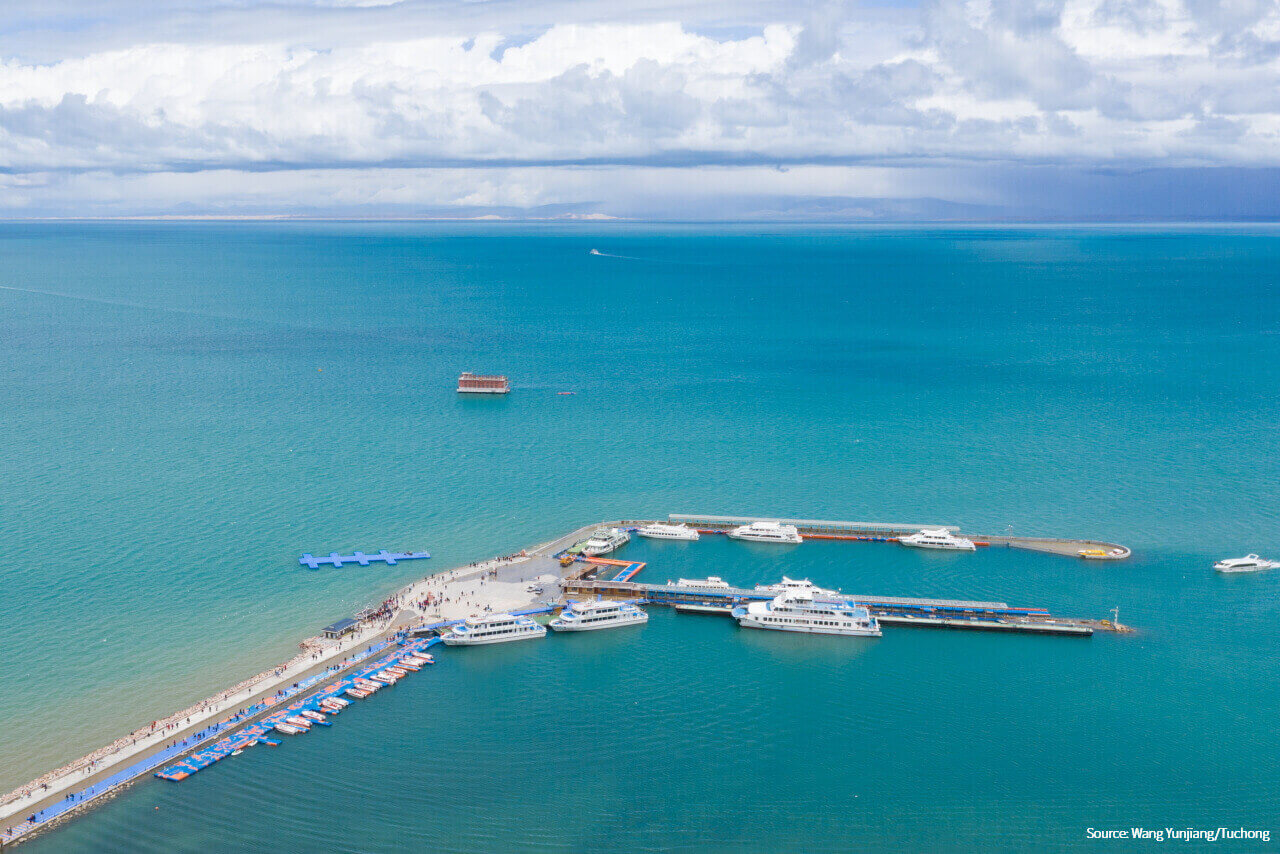You will have a whole day inner-city tour in Lhasa. The attractions you will visit during the day are Potala Palace, Norbulingka Summer Palace, Jokhang Temple and Barkhor Street. An optional activity suggested for enriching your tour is to watch an impressive Tibetan dancing show.
Potala Palace is a huge castle situated on the Red Hill. It was originally built in the seventh century by King Songtsan Gambo. The king built it for his two wives, namely Princess Wencheng from the Tang Empire and Princess Khridzun from Nepal. The castle was reconstructed in 1645 by the Fifth Dalai Lama. Then, Potala Palace became Dalai Lamas’ official residence. It was added to the list of world cultural heritage sites by UNESCO in 1994.
Norbulingka Summer Palace is located about 2 kilometers(1.2 miles) to the west of Potala Palace. It was built by the Seventh Dalai Lama in 1755. It used to be the summer house of Dalai Lamas. The compound is hidden by trees. It covers an area of 36 hectares(89 acres). Nowadays, Norbulingka Summer Palace has become a garden and a museum open to the public. It is also the place where local people celebrate some grand traditional festivals.
Jokhang Temple is the most sacred Buddhist monastery in Tibet. It was built by King Songtsan Gambo in the seventh century. The temple houses the statue of Sakyamuni which was brought to Lhasa by Princess Wencheng. It is one of the must-go attractions in Lhasa.
Barkhor Street lies in the center of downtown Lhasa. It is the oldest traditional Tibetan styled street encircling Jokhang Temple. The street could be traced back to the seventh century. It is a place where visitors can bargain with the local Tibetan vendors for handicrafts which are rear to be seen elsewhere in the world. Barkhor Street is a very important path along which Buddhist pilgrims have walked to Jokhang Temple for centuries.
 Well-known as the Roof of the World, Qinghai-Tibet High Plateau spans five provinces in Western China, namely Tibet Autonomous Region, Qinghai Province, Western Sichuan Province, Northwestern Yunnan Province and Southwestern Gansu Province. It is bounded by the mighty Himalaya Range and Thanggula Range. The vast plateau is rich in sightseeing resources. It attracts tourists with its breathtaking wild beauty and absolutely unique Tibetan culture.
Well-known as the Roof of the World, Qinghai-Tibet High Plateau spans five provinces in Western China, namely Tibet Autonomous Region, Qinghai Province, Western Sichuan Province, Northwestern Yunnan Province and Southwestern Gansu Province. It is bounded by the mighty Himalaya Range and Thanggula Range. The vast plateau is rich in sightseeing resources. It attracts tourists with its breathtaking wild beauty and absolutely unique Tibetan culture.

